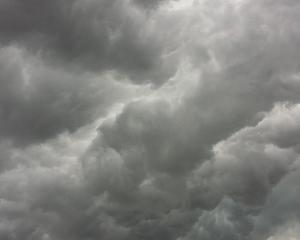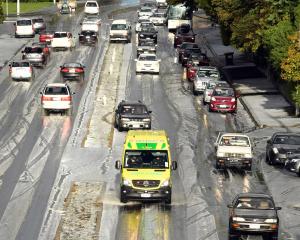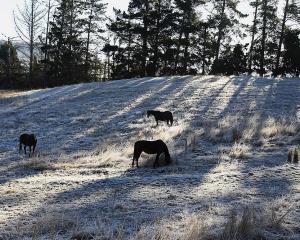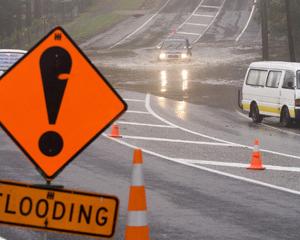It was also extremely sunny and temperatures were generally near average, all contributing to low soil-moisture levels in many parts of the region.
Climate scientist Georgina Griffiths said the month was characterised by temperature extremes, starting off cool and ending warm, with record afternoon maximum temperatures recorded at the airport.
Otago, especially Central Otago, would be facing a very dry three months if predictions of an El Nino summer eventuated, she said.
Dry soil began to appear six to seven weeks ago in Central Otago as temperatures increased.
Teviot Valley farmers, facing their driest season since they began taking local records 86 years ago, are already de-stocking to relieve the pressure on their parched properties.
Roxburgh East farmer George Wales said rainfall records had been kept on his family farm, "Baldwin", since 1923 and this year was the driest.
"Dams on the place have dried up that have never dried before. This really is a drought."
There had been only 266mm of rain so far this year, compared with 304mm in 2008 and 342mm in 2007.
That added up to three consecutive years of low rainfall - the average annual rainfall used to be 482mm-533mm.
Mr Wales' son, Jeremy, who now runs the property, said he had "written off" summer already, saying it had already been "a hard season".
Many farmers throughout the district had weaned calves and lambs early, looked for grazing elsewhere, de-stocked and not bothered to plant winter feed as there was no growth.
Central Otago Principal Rural Fire Officer Owen Burgess said the recent rain over some of the district had had little effect on the fire risk.
There was still a total fire ban in place.
Niwa's November figures showed Ranfurly recorded its lowest rainfall since 1943 with 1mm, and Wanaka and Dunedin airport recorded their fourth-lowest rainfalls since their records began in 1927 and 1918 respectively - Wanaka 9mm (17% of normal) and Dunedin airport 22mm (40% of normal).
Dunedin's Musselburgh station recorded only 19mm of rain (30% of normal), its second-lowest amount since 1918.
Temperatures also broke records, with Dunedin airport experiencing its highest mean maximum daily temperature of 19degC (1.5degC warmer than normal) since records began in 1962, and its highest daily extreme maximum of 31.1degC on November 23.
Musselburgh's mean temperature was 12.9degC, 0.6degC above average.
Other extreme daily maximum temperatures were recorded at Queenstown (26degC, equal fourth-highest), Balclutha (27.6degC, fourth-highest), and Oamaru (11degC, equal fourth-lowest).
Records were also broken for extreme low daily minimum temperatures, with Dunedin airport recording -0.4degC, the lowest since 1962, and Balclutha 0degC (equal third-lowest since 1964).
It was also very sunny in Otago, with Balclutha recording its highest sunshine hours (249) since records began in 1964 and Cromwell recording its third highest (282) since records began in 1979.
Musselburgh experienced 193 hours, 120% above normal.
The region also experienced high winds, with near-record high gusts recorded at Tara Hills at Omarama on November 27 (87kmh), and Lauder on November 4 (132kmh, equal highest since 1981).







